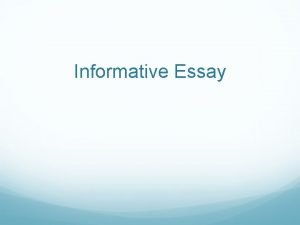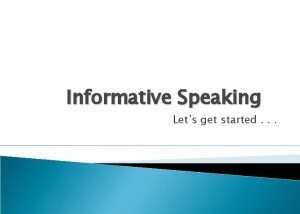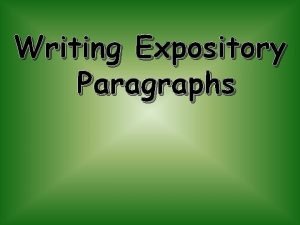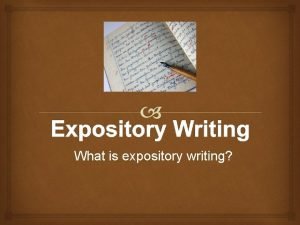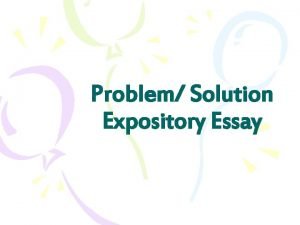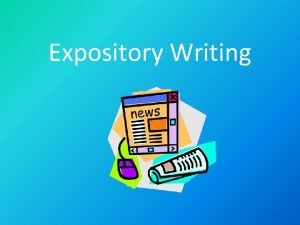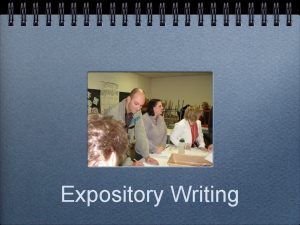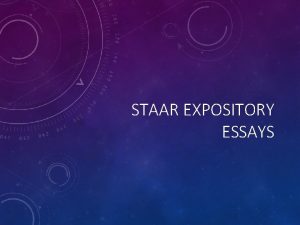INFORMATIVE WRITING An Introduction Informative Expository An informative






- Slides: 6

INFORMATIVE WRITING An Introduction

Informative = Expository An informative essay, also known as an expository essay, gives the reader detailed information about a specific topic. Informative/expository essays are usually written in five paragraphs.

What Informative/Expository Writing Looks Like Five paragraphs First paragraph: Introduction States the character and the main things you’ll talk about in the Body Second, Third, Fourth paragraphs: Body HUGE amounts of detail, fact, and example Fifth paragraph: Conclusion Nicely summarizes everything

Overview on the Writing Process 1. 2. 3. 4. 5. 6. 7. 8. 9. Take a deep breath, yo. Choose a character or topic you have some definite opinion(s) on or already know something about. Start with what you know—I promise you already know a lot. Then do research or look through a text to fill in the gaps. Brainstorm using a graphic organizer, write out ideas, maybe make an outline. Write a draft. Revise with a friend. Revise with a parent/guardian. Revise by yourself. Revise with your teacher. Rewrite. Edit, proofread, check spelling, grammar, etc. Turn in, on time, your last draft. Consider yourself a writer.

RACES R - Restate the Question or Prompt Introduction A - Answer the Question or Prompt Introduction C - Give Evidence Body E - Explain Evidence Body S- Sum it up with a conclusion

Tips on Expository/Informative Writing It should be fact-based. Facts can be quotes, statistics, definitions, names, dates, events. It should be formal. Remember who your reader is. Use examples. Explain what you mean. Don’t be overwhelmed. You have a lot of valuable stuff to say. Your teachers want to read it.
